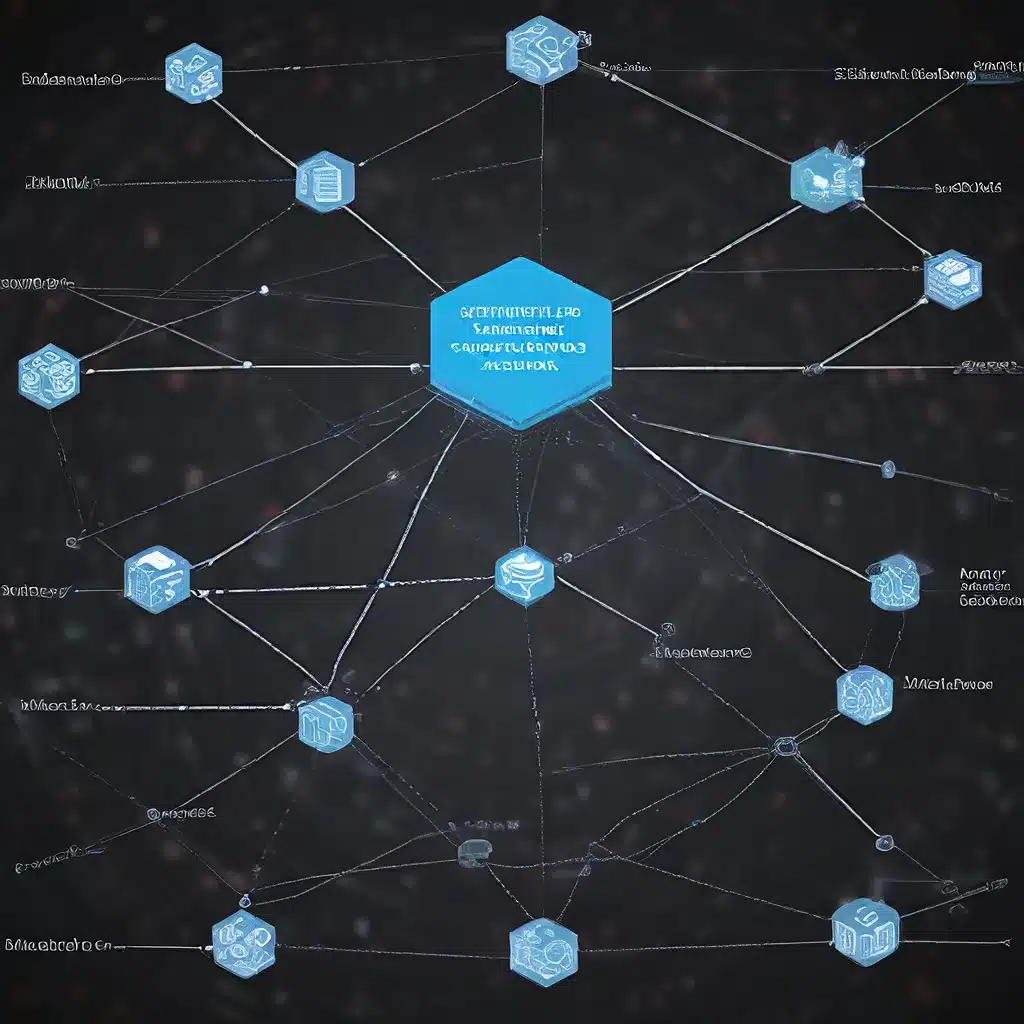
In the rapidly evolving landscape of sensor networks and the Internet of Things (IoT), the need for secure and resilient coordination and control mechanisms has become increasingly crucial. As these networks grow in complexity and scale, traditional centralized approaches often fall short in addressing the challenges of data integrity, fault tolerance, and energy efficiency. This article explores the role of distributed consensus algorithms in addressing these challenges, empowering sensor networks to operate with enhanced security, resilience, and optimal resource management.
Understanding Distributed Consensus Algorithms
Distributed consensus algorithms are a class of protocols that enable multiple autonomous agents (such as sensor nodes) to reach a common agreement on a particular state or decision, even in the presence of faulty or malicious nodes. These algorithms rely on local information exchange and iterative computations to converge towards a global objective, without the need for a central authority.
One of the key advantages of distributed consensus algorithms is their ability to withstand disruptions and maintain network functionality even when individual nodes fail or become compromised. By leveraging redundancy and fault-tolerance, these algorithms can ensure that the network as a whole continues to operate reliably, even in the face of adverse conditions.
Sensor Network Coordination and Control
Sensor networks are inherently distributed systems, with numerous nodes scattered across a geographical area, each responsible for data collection, processing, and transmission. Coordinating the activities of these nodes to achieve a common goal, such as environmental monitoring or asset tracking, is a complex challenge that distributed consensus algorithms are well-equipped to address.
Sensor networks often rely on consensus-based protocols to synchronize data, coordinate tasks, and optimize network performance. By reaching a consensus on critical parameters, such as sensor calibration, data fusion, or task allocation, these networks can operate efficiently and adapt to changing conditions without the need for centralized control.
Securing Sensor Networks with Distributed Consensus
One of the key benefits of distributed consensus algorithms in sensor networks is their ability to enhance security and mitigate the impact of malicious actors. In a decentralized network, where no single point of failure exists, the system can continue to function even if some nodes are compromised or behave maliciously.
Distributed consensus algorithms employ techniques like Byzantine fault tolerance, which enables the network to reach agreement despite the presence of faulty or adversarial nodes. This resilience is particularly important in IoT applications, where sensor nodes may be deployed in uncontrolled environments and susceptible to physical tampering or cyber-attacks.
Energy-Efficient Network Coordination
Sensor networks often operate in resource-constrained environments, where energy consumption is a critical concern. Distributed consensus algorithms can play a pivotal role in optimizing energy usage across the network, ensuring that sensor nodes operate in an energy-efficient manner without compromising functionality or performance.
Through techniques like duty cycling, dynamic task allocation, and adaptive communication protocols, distributed consensus algorithms can minimize the energy required for data collection, processing, and transmission. This, in turn, can extend the operational lifetime of sensor networks, making them more sustainable and cost-effective in the long run.
Applications of Distributed Consensus in Sensor Networks
The versatility of distributed consensus algorithms has enabled their adoption across a wide range of sensor network applications, each with its unique challenges and requirements. Some of the key application areas include:
-
Smart Cities: Distributed consensus algorithms can coordinate the activities of various IoT devices in a smart city environment, such as traffic lights, waste management systems, and environmental monitoring sensors, to optimize resource utilization and enhance overall city operations.
-
Industrial Automation: In industrial settings, distributed consensus algorithms can facilitate the coordination of robotic systems, predictive maintenance, and supply chain optimization, ensuring seamless collaboration and fault-tolerant operations.
-
Environmental Monitoring: Sensor networks deployed for environmental monitoring, such as wildlife tracking, forest fire detection, or water quality management, can leverage distributed consensus algorithms to aggregate data, coordinate response actions, and adapt to changing conditions.
-
Healthcare and Assisted Living: In the healthcare domain, distributed consensus algorithms can enable the coordination of wearable devices, remote patient monitoring, and emergency response systems, ensuring data integrity and patient safety.
-
Disaster Response and Emergency Management: During disaster scenarios, distributed consensus algorithms can help coordinate the activities of first responders, emergency vehicles, and relief supplies to optimize resource allocation and emergency response efforts.
Future Outlook and Emerging Trends
As sensor networks and IoT technologies continue to evolve, the role of distributed consensus algorithms in shaping the future of these systems is becoming increasingly pivotal. Some emerging trends and future developments include:
-
Integrating Distributed Consensus with Machine Learning: The combination of distributed consensus algorithms and machine learning techniques can lead to the development of self-adaptive and self-healing sensor networks, capable of learning from past experiences and optimizing their operations in real-time.
-
Edge Computing and Distributed Intelligence: With the growing prominence of edge computing in sensor networks, distributed consensus algorithms can enable distributed decision-making and task offloading, reducing the burden on central cloud infrastructure and improving response times.
-
Blockchain-based Consensus Mechanisms: The integration of blockchain technology with distributed consensus algorithms can provide enhanced security, transparency, and auditability for sensor network data, enabling trusted and tamper-resistant applications.
-
Energy Harvesting and Sustainable Sensor Networks: Advancements in energy harvesting technologies, coupled with the energy-efficient nature of distributed consensus algorithms, can lead to the development of self-sustaining sensor networks that operate indefinitely without the need for manual battery replacement.
As the IoT landscape continues to expand, the role of distributed consensus algorithms in securing, coordinating, and optimizing sensor network operations will become increasingly crucial. By embracing these innovative techniques, researchers and practitioners can unlock new possibilities for a resilient, energy-efficient, and secure IoT ecosystem.